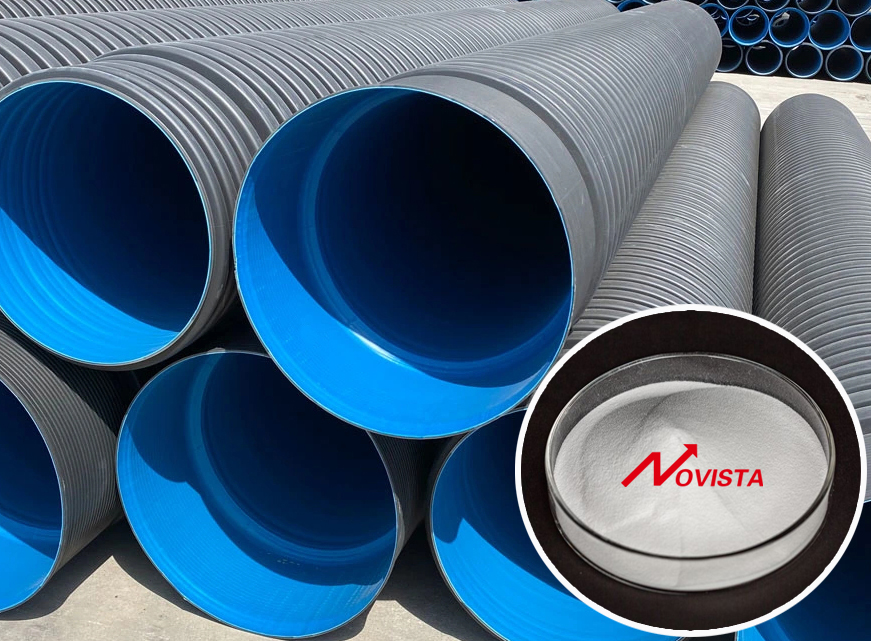Classification and action mechanism of PVC heat stabilizers-1

Thermal stabilizers are a type of additive that can prevent or reduce the degradation or cross-linking of polymers due to heat during processing and use, and extend the service life of composite materials. Commonly used stabilizers can be divided into salt-based types, fatty acid soaps, organotin compounds, composite heat stabilizers and pure organic compounds according to their main ingredients.
Classification
1. Salt-based heat stabilizers: Salt-based stabilizers refer to inorganic and organic acid lead salts combined with a "salt base". This type of stabilizer has excellent heat resistance, weather resistance and electrical insulation, and is low in cost. , has poor transparency and a certain degree of toxicity, and the dosage is generally 0.5% to 5.0%.
2. Fatty acid heat stabilizer: This type of heat stabilizer refers to a compound composed of fatty acid radicals and metal ions. It is also called metal soap heat stabilizer. Its performance is related to the type of acid radicals and metal ions. The general dosage is 0.1%. ~3.0%.
3. organotin heat stabilizer: This type of heat stabilizer can form a ligand with the unstable chlorine atoms in the polyvinyl chloride molecule, and in the ligand, the carboxylate group of the organotin and the unstable chlorine atom Displacement. This type of heat stabilizer is characterized by high stability, good transparency, and excellent heat resistance. The disadvantage is that it is relatively expensive.
4. Composite heat stabilizer: This type of heat stabilizer is a liquid or solid compound based on salt-based or metal soaps and a compound based on organotin. The metal salts include calcium-magnesium-zinc, Barium-calcium-zinc, barium-zinc and barium-cadmium, etc.; commonly used organic acids such as organic fatty acids, naphthenic acid, oleic acid, benzoic acid and salicylic acid, etc.
5. organic compound heat stabilizers: In addition to a few main stabilizers (mainly nitrogen-containing organic compounds) that can be used alone, this type of heat stabilizer also includes high-boiling polyols and phosphites. Phosphites are often combined with The combined use of metal stabilizers can improve the weather resistance and transparency of composite materials, and improve the surface color of products.
The mechanism of action of PVC heat stabilizer
Absorption neutralizes HCL and inhibits its autocatalytic effect. Such stabilizers include lead salts, organic acid metal soaps, organotin compounds, epoxy compounds, phenates and metal thiolates, etc. They can react with HCL and inhibit the reaction of PVC to remove HCL. Replacement of unstable allyl chloride atoms in PVC molecules inhibits dePVC. For example, the organic tin stabilizer is coordinated with the unstable chlorine atom of the PVC molecule, and in the ligand, the organic tin is replaced with the unstable chlorine atom.
An addition reaction occurs with the polyene structure, destroying the formation of large conjugated systems and reducing coloring. The salts or esters of unsaturated acids contain double bonds, and diene addition reactions occur with the conjugated double bonds in the PVC molecule, thereby destroying its conjugated structure and inhibiting discoloration. Capture free radicals and prevent oxidation reactions. For example, adding phenolic heat stabilizers can block HCL removal because the H atom free radicals given by phenol can couple with the degraded PVC macromolecule free radicals to form substances that cannot react with O2 and have a thermal stabilizing effect. This heat stabilizer can have one or several functions.
Function
The ideal PVC heat stabilizer should be a multifunctional substance or a mixture of materials that can achieve the following functions: first, to replace active and unstable substituents; second, to absorb and neutralize the heat released during PVC processing. HCL, to eliminate the autocatalytic degradation of HCL; the third is to neutralize or passivate metal ions and other harmful impurities that catalyze degradation; the fourth is to block the continued growth of unsaturated bonds and inhibit the growth of unsaturated bonds through various forms of chemical reactions. Degradation and coloring; fifth, it has a protective and shielding effect on ultraviolet light.
Usually heat stabilizers are used in combination according to their special effects. They are rarely used alone, and most of them are in powder form, and some are highly toxic chemicals. In order to facilitate use, prevent dust poisoning, reduce toxic substances or replace them with non-toxic substances, many kinds of compound stabilizers have been developed at home and abroad in recent years, such as the world-famous German Baerlocher brand compound stabilizer series, which are sold in the United States, Germany, Japan, organotin or composite organotin stabilizers from countries such as the Netherlands occupy a considerable market in China. Therefore, it is an urgent need for the development of plastics industry to fully promote the application of new composite stabilizers developed in that are efficient, low-cost, non-dust pollution and non-toxic or low-toxic.
(To be continued...)





